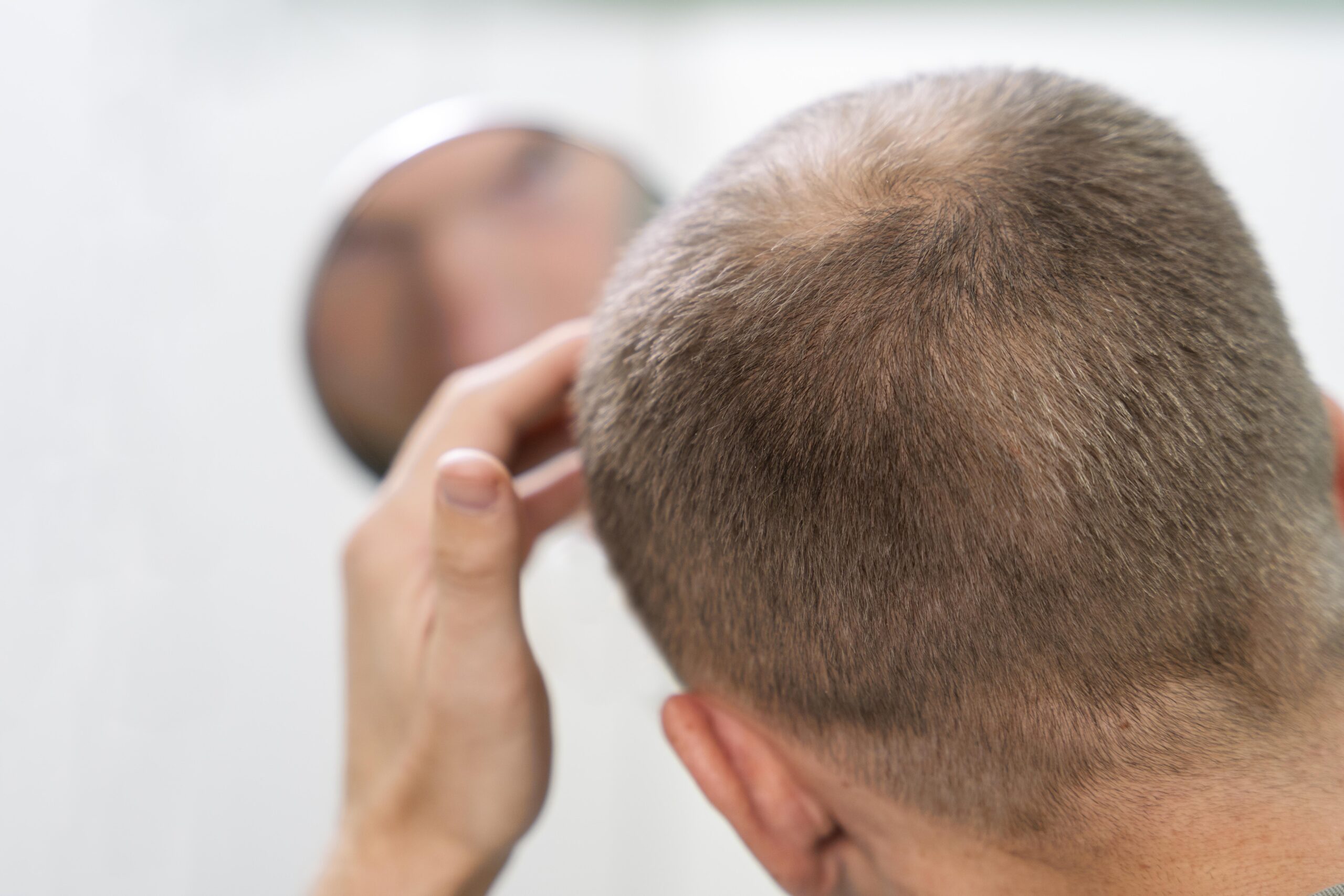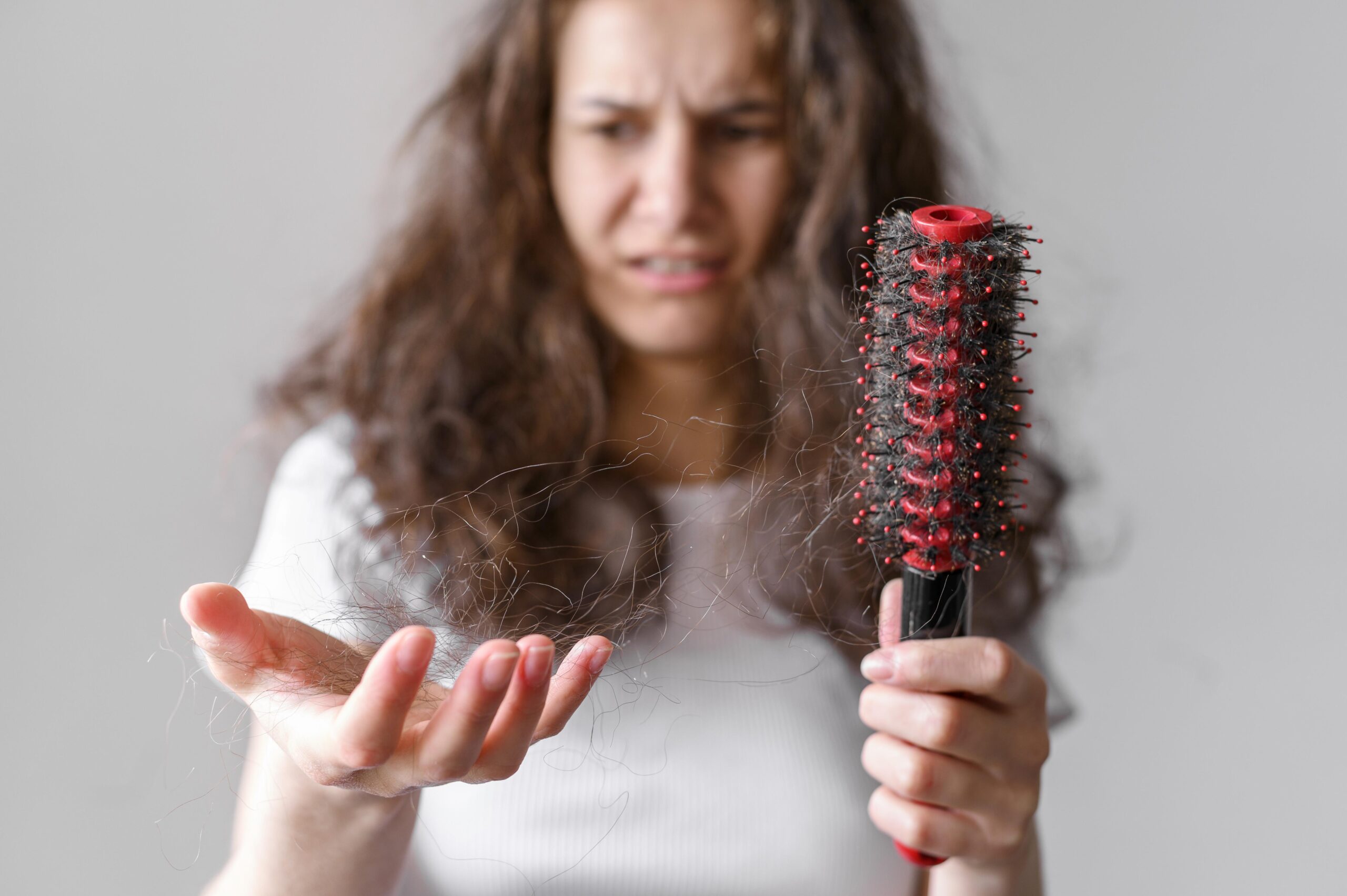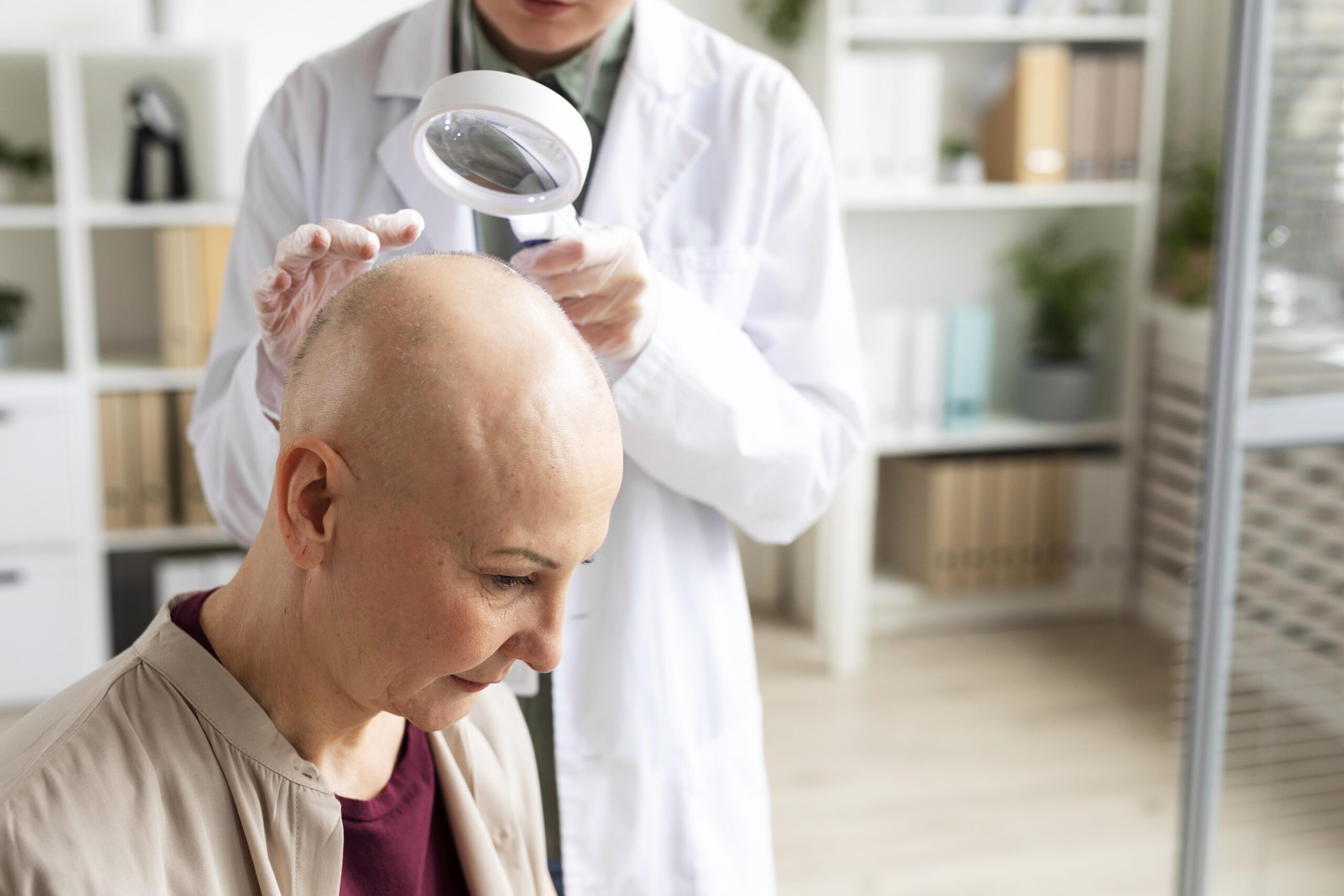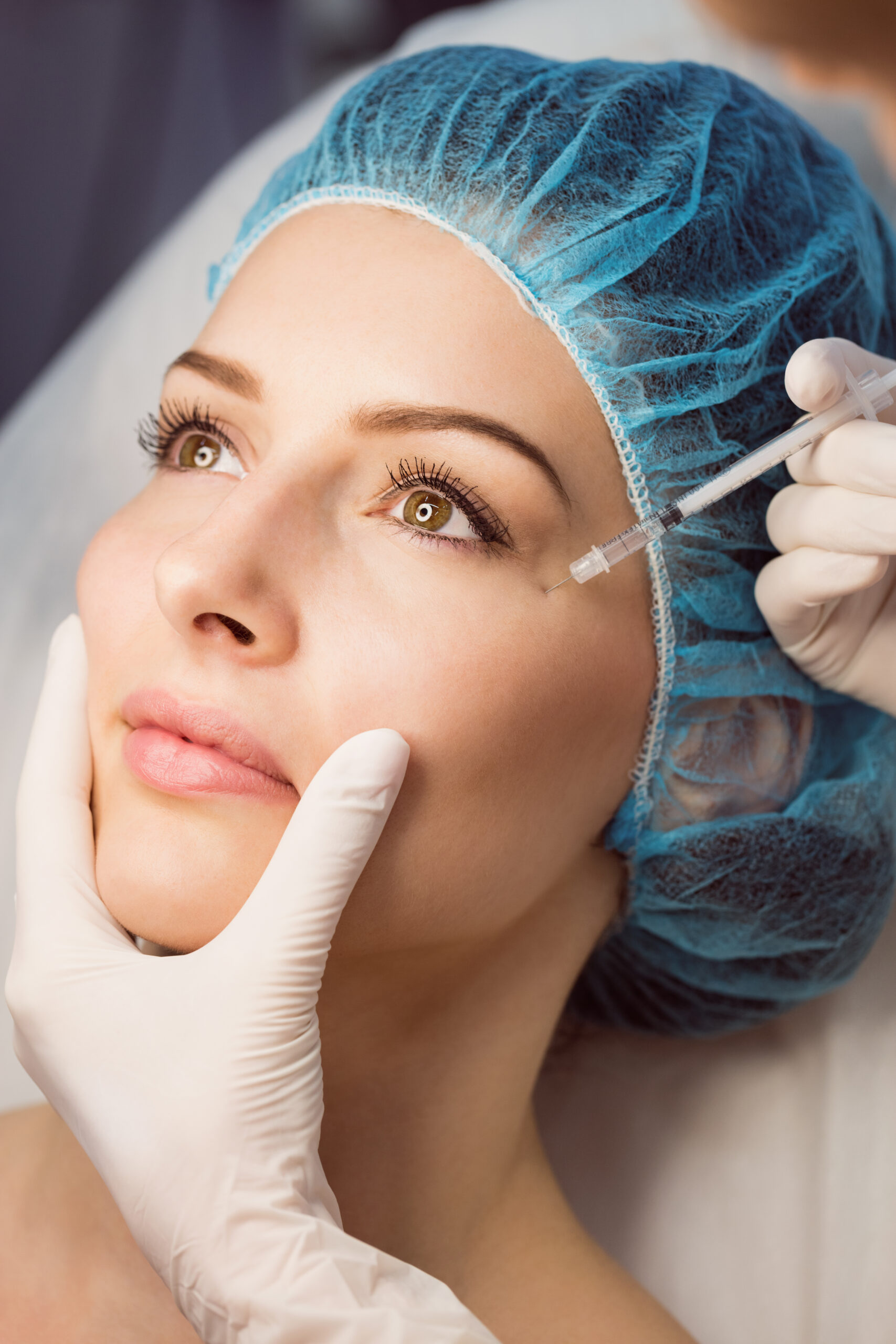Alopecia, the medical term for hair loss, is a prevalent disorder that affects both men and women. It can range from slight thinning to total baldness and cause a great deal of psychological pain. Effective management requires knowledge of the many forms of hair loss, as well as its origins, symptoms, treatments, and preventative measures.

Types of Hair Loss

Androgenetic Alopecia (AGA)
- Also referred to as female-pattern and male-pattern baldness.
- It usually shows up in men as thinning on the crown and a receding hairline.
- It usually causes overall thinning in women without hairline recession.
- Most prevalent kind of hair loss, impacted by hormones and genetics.

Alopecia Areata
- An autoimmune condition that results in sporadic hair loss on the scalp and other body areas.
- Can develop into alopecia universalis, which is the loss of all body hair, or alopecia totalis, which is the loss of all scalp hair.

Telogen Effluvium
- Temporary hair loss following a major stressor, such as a medical procedure, trauma, event disease.
- Diffuse hair loss usually happens two to three months following the trigger.

Traction Alopecia
- Caused by extended hair strain, frequently as a result of tight braids, ponytails, or hair extensions.
- Avoidable by altering hairstyling techniques.

Scarring Alopecia (Cicatricial Alopecia)
- A collection of uncommon conditions that cause scar tissue to grow in lieu of hair follicles.
- May result in irreversible hair loss.
- Includes diseases like frontal fibrosing alopecia and lichen planopilaris.

Anagen Effluvium
- Rapid hair loss brought on by some medical procedures, such chemotherapy.
- Impacts hair throughout its anagen period of growth.
Symptoms
- Androgenetic Alopecia: gradual narrowing of the crown of the head, with men’s hairlines receding and women’s parts broadening.
- Alopecia Areata: abrupt onset of uneven, circular hair loss.
- Telogen Effluvium: uniform thinning of the hair on the scalp.
- Traction Alopecia: hair breaking and thinning in areas where it is pushed tightly.
- Scarring Alopecia: symptoms including discomfort, irritation, and itching along with hair loss.
- Anagen Effluvium: abrupt loss of hair on the body and scalp.
Causes
- Genetics: Hair loss runs in the family.
- Hormonal Changes: Thyroid diseases, menopause, pregnancy, and childbirth.
- Medical Conditions: Trichotillomania (hair-pulling disorder), autoimmune illnesses, and scalp infections.
- Medication includes blood thinners, beta-blockers, antidepressants, and chemotherapy treatments.
- Nutritional Deficiencies: Low levels of vitamins, iron, and protein.
- Stress: Emotional or physical strain.
- Hairstyling techniques include chemical treatments, heat, and tight hairstyles.

Risk Factors
- Age: As people age, hair loss becomes more prevalent.
- Family History: Hair loss is genetically predisposed.
- Medical Conditions: Diabetes, lupus, and autoimmune illnesses.
- Medication: A number of medications have been linked to hair loss.
- Diet: Nutrient deficits and poor nutrition.
- Stress: Excessive stress might be the cause of hair loss.
Diagnosis
- Medical History and Physical Examination: Symptom assessment, family medical history, scalp examination.
- Blood tests: To find dietary deficits or underlying diseases like thyroid illness.
- Scalp Biopsy: To identify the reason behind hair loss, a tiny sample of the scalp’s tissue is analyzed.
- Pull Test: To determine when the shedding phase is occurring, gently pull a tiny portion of hair to check how many hairs fall out.
Dermatoscopy: Using a dermatoscope, the scalp is examined for indications of inflammation or scarring.

Treatment
Androgenetic Alopecia:
Topical Treatments:
Minoxidil (Rogaine): Applied to the scalp to stimulate hair growth.
Oral Medications:
Finasteride (Propecia): lowers hormone levels linked to hair loss.
Hair Transplant Surgery: transferring hair follicles to balding regions of the body from another area.
Low-Level Laser Therapy (LLLT): Applying phototherapy to promote hair growth.
Alopecia Areata:
Corticosteroids: Steroids administered topically or via injection to lower inflammation and inhibit the immune system.
Topical Immunotherapy: chemically treating the scalp in order to cause an allergic reaction and promote hair growth.
Minoxidil: To promote hair regrowth.
Telogen Effluvium:
- Treating the underlying reason, such as a nutritional deficiency or stress, is known as addressing underlying causes.
- Nutrition and Diet: Making sure you’re getting enough vitamins and minerals.
Traction Alopecia:
- Changing Hairstyles: Steer clear of pulling on the hair with tight hairstyles.
- Medications: Minoxidil to promote regrowth.
Scarring Alopecia:
- Medication: Anti-inflammatory drugs to lessen inflammation in the scalp.
- Surgery: Hair transplant if the inflammation is under control and the condition is stable.
Anagen Effluvium:
Cooling Caps: Description Used to lessen hair loss during chemotherapy.
Minoxidil: To promote regrowth after chemotherapy.
Prevention
- Gentle Hair Care: Steer clear of heat treatments, harsh chemicals, and tight haircuts.
A balanced diet consists of getting enough iron, vitamins, proteins, and other nutrients. - Stress management: Stress-reduction methods including yoga, meditation, and physical activity.
- Frequent medical checkups: keeping an eye on and treating underlying medical issues.
- Choosing looser haircuts and avoiding braids and extensions are two ways to avoid traction.
Complications
- Psychological Impact: Low self-esteem, anxiety, and despair can result from hair loss. Infections on the scalp can result from using harsh chemicals or from improper hair care.
- Permanent Hair Loss: When androgenetic alopecia goes untreated or leaves scars behind.
Pharmacist Interventions
Medication counseling: Give guidance on how to take oral and topical drugs correctly, with a focus on following prescribed dosage amounts.
Lifestyle Advice: Inform patients about the value of a balanced diet and gentle hair care techniques.
Resources and Assistance: Provide assistance in coping with the psychological effects of hair loss, such as connections to support groups or mental health specialists.
Monitoring and Follow-Up: Consult with patients on a regular basis to assess the success of therapies and make necessary modifications.
Conclusion
Hair loss can have a major influence on a person’s life, ranging from little thinning to total baldness. Effective management requires knowledge of the many forms of hair loss, as well as its origins, symptoms, treatments, and preventative measures. An accurate diagnosis and individualized treatment programs can slow the rate of hair loss and encourage regeneration, which will enhance one’s quality of life in general. If hair loss is severe or persistent, always seek medical advice.

